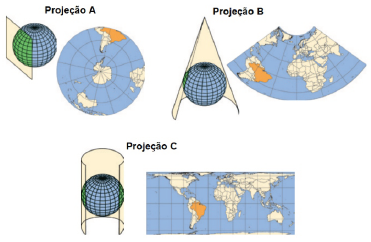Questões de Concurso
Comentadas para prefeitura de cuiabá - mt
Foram encontradas 2.451 questões
Resolva questões gratuitamente!
Junte-se a mais de 4 milhões de concurseiros!
















A relevância do tema, para o ensino da Geografia, pode ser justificada pela importância de:
(BROOKS, C. Uma bússola profissional. In: ROCHA, A. A; MONTEIRO, A. M.; STRAFORINI, R. Conversas na escada: currículo, docência e disciplina escolar. Rio de Janeiro: Consequência, 2019, p. 76).
Segundo a autora, a bússola profissional pode, portanto, permitir ao professor de Geografia:
De acordo com a Pastoral do Migrante, a capital recebe pessoas de vários países e diferentes nacionalidades, como haitianos, argentinos, cubanos e venezuelanos.” (Adaptado. Disponível em: https://g1.globo.com/mt/mato-grosso/noticia/2019/08/23/imigrantes-tem-dificuldades-para-arrumar-emprego-em-cuiaba.ghtml. Acesso em 27/10/2019)
Dentre os fatores responsáveis pelo aumento do fluxo migratório de latino-americanos para o Brasil, pode-se destacar a:
Nas últimas décadas, o Pantanal vem sofrendo agressões pelo homem, praticadas não somente na planície, mas principalmente nos planaltos adjacentes. Dentre os impactos ambientais provocados pela expansão da agropecuária, pode-se citar o aumento:

Diferentes projeções cartográficas foram desenvolvidas para permitir a representação da esfericidade terrestre num plano (mapas e cartas), cada uma priorizando determinado aspecto da representação (dimensão, forma, etc.). (Disponível em: https://biblioteca.ibge.gov.br/visualizacao/livros/liv64669_cap2.pdf. Acesso em 27/10/19)
Considerando-se a classificação das projeções cartográficas quanto à figura geométrica empregada em sua construção, as projeções A, B e C correspondem, respectivamente, a:
 A prolongada e sangrenta Guerra Civil que assola a
Síria, e que recentemente ganhou novos e perigosos
contornos a partir do anúncio da retirada oficial do
Exército dos EUA, parece estar longe de chegar ao
fim.
Pode-se afirmar corretamente sobre o conflito:
A prolongada e sangrenta Guerra Civil que assola a
Síria, e que recentemente ganhou novos e perigosos
contornos a partir do anúncio da retirada oficial do
Exército dos EUA, parece estar longe de chegar ao
fim.
Pode-se afirmar corretamente sobre o conflito: